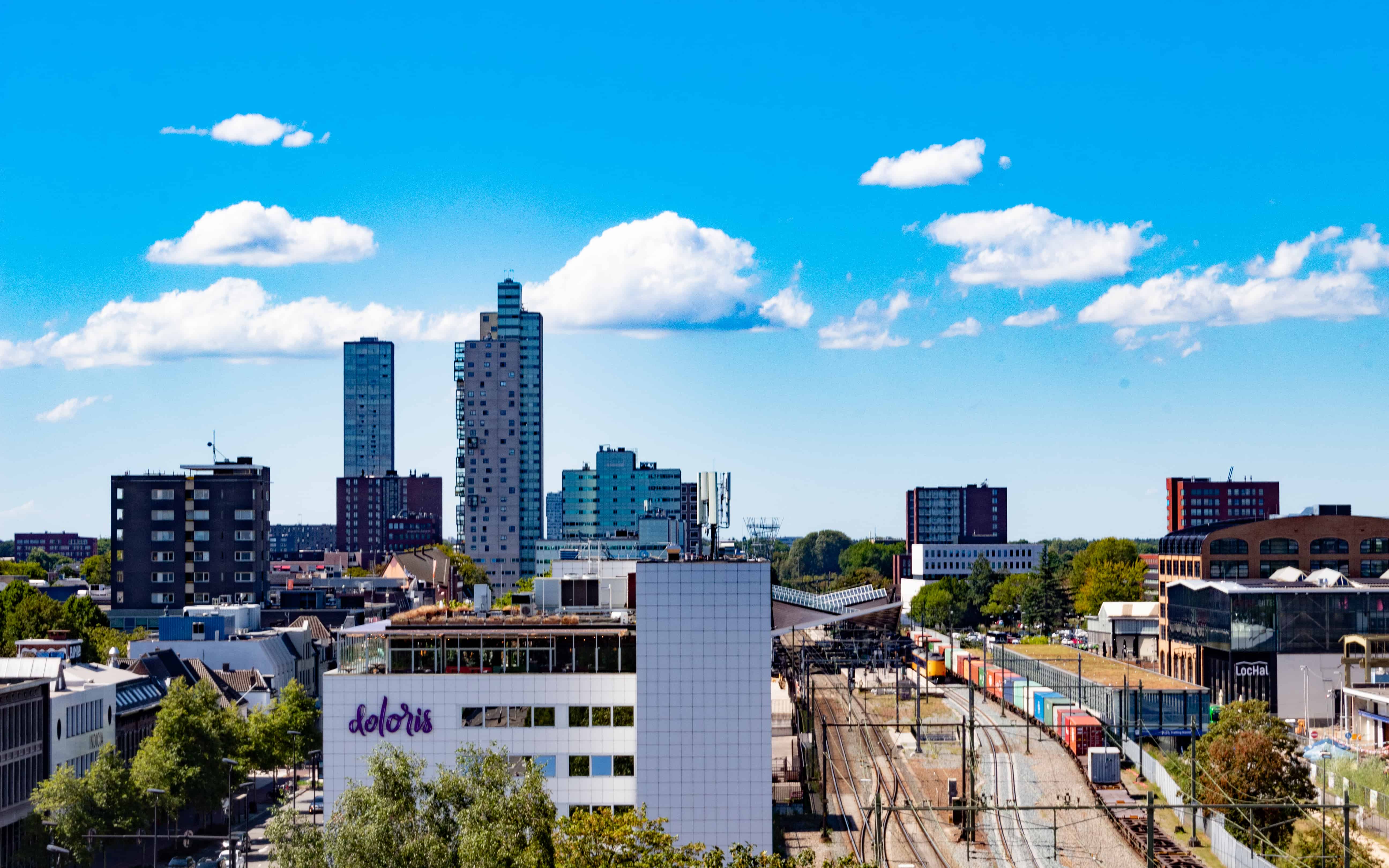
The Austrian company RadioLED has started to roll out a high-speed WiFi network in the Dutch municipality of Apeldoorn. This is quite visible because white boxes hang from lampposts here and there. In total, this involves the installation of the tech company’s small radio transmitters in or on lampposts.
According to RadioLED, the network offers more capabilities than the technology of existing providers. It is primarily intended for paying users who, for example, put IoT (Internet of Things) applications into practice this way. Companies, educational institutions, healthcare organizations or the government are among potential users. Apart from that, free wifi with faster internet speeds will be offered to local residents.
The innovative effort involving the facilitation of ict applications in public spaces and open access internet raises concerns. It has already led to discussion at the municipal level. What is it about precisely, what about privacy, is there a radiation hazard? It is true that Apeldoorn is leading the way with this type of high-speed network?
High-speed network differs from fiber optics
Speaking on behalf of RadioLED, Gregory Engelbrecht explains how it was accomplished and what distinguishes this network from 5G, the major telecom providers, fiber optics or Wi-Fi hotspots. “Fiberglass is the most widely known. It goes from A to B across lines, but is linked to buildings, sensors or cameras and is therefore less flexible. You then need cables everywhere and that comes with a price tag. With the transition from 4G to 5G, you need more masts for reception. We don’t need to do that. And distance plays a role in those masts. You already have a difference in reception if you have a building on your left or right. That interferes with the reception. This is not the case with small transmitters that are spread throughout an entire area.”
The network is made up of hundreds of transmitters that are connected to each other. This means that a relatively small distance needs to be covered each time to transmit the information further. As a result, the transmitters operate at low levels of power, Engelbrecht says.

Coverage greater than wifi hotspots
“You also have wifi hotspots. But those are only at certain places. That’s not a disadvantage that we have. The same connection is in place all over the city. In short, with this kind of network, you have all the functionalities and you won’t miss fiber, those masts or those hotspots.”
RadioLED is launching the rollout of the system without having any paying users right away. “The expectation is that in future, a whole lot of applications, say 85 percent, will go wireless. Autonomous driving, IoT for bicycle traffic, among other things, or collecting data as a company about the number of free parking spaces in a garage, you name it. We can provide the infrastructure for that.”
“What’s more, companies can use our network to provide their services. And because RadioLED’s network is based on open source software, we are stimulating Dutch innovation this way.”
No 5G frequencies
However, RadioLED is not allowed to use the frequencies for 5G. These are licenses that the major providers pay a lot of money for in order to guarantee faster internet speeds. The network’s technology has a host of other frequencies between 450kHz and 6gHz at its disposal. It is a neutral infrastructure.
Other companies can also rent capacity from the network and resell it to consumers as a service provider, for instance. Also, thanks to the multipoints, the computational power can be used as a data center to process data.
Apeldoorn is the first municipality in the Netherlands to have this system. RadioLED has also built a network in Switzerland in order to be able to provide a reliable signal in a tunnel.
Delayed startup of high-speed network
The launch in the Netherlands had some problems due to some global logistical problems, the local political debate about its arrival, and corona. It all turned out differently than expected as a consequence. For example, the white boxes are apparently a bone of contention. The aim is that in the future, these will be made of different materials so that they are less conspicuous.
Along with the introduction of the special network there is also a focus on the value of lampposts as easy-to-use infrastructure for things other than just lighting.
In the US, situations already exist where regular wifi network usage costs more than networks running through lampposts. This keeps the cost of connectivity unnecessarily high for consumers and businesses in the US. Because Apeldoorn (and other European cities) are taking a facilitative approach, Europe will soon have a head start in developing new digital applications and smart cities. Bringing benefits to citizens, businesses and the economic development of the city.
Smart City the Netherlands: ‘interesting’
Smart City Nederland, a partnership between Netherlands-based Primevest Capital Partners and BNG Bank, is an investor that sees opportunities to use lampposts for other purposes. For example, for the rollout of 5G, the charging of electric vehicles and IoT applications. In that respect, Heimen Visser, the fund manager representing this party, thinks Apeldoorn is an interesting initiative. He points to the Smart Public Nodes research conducted by the Netherlands Organisation for Applied Scientific Research (TNO), which demonstrates the suitability of lampposts for multifunctional uses.
The Environment Act is on its way. Then the need to measure particulate matter and the like is set to increase.”
Heimen Visser, Smart City Nederland
Visser believes that 5G can then be integrated this way. Although, according to him, the large telecom providers are not as likely to use RadioLED. After all, this company works with its own technology.
“The Environment Act is on its way. Then the need to measure particulate matter and the like is set to increase. Small sensors linked to a smart network of lampposts are then a sensible option. That is an ideal business case. RadioLED is tapping into that a little bit.”
Apeldoorn supports the initiative
The municipality of Apeldoorn outlines how the collaboration with RadioLED works. “The construction of a communication network by RadioLED is a private initiative,” states a spokesperson. “The network is not being constructed at the behest of the municipality of Apeldoorn. The municipality has entered into an agreement with RadioLED on the provision of lampposts.”
The municipality says it knows that the Austrians are currently in discussions with various parties to make use of the network. “These are primarily business-to-business collaborations. In any case, it is the first time we have made municipal lampposts available specifically for a communications network.”
Apeldoorn is not spending any money on the project; RadioLED is investing eighteen million euros itself, in the expectation of making the network profitable in the future.
The municipality of Apeldoorn welcomes the development, but is leaving the initiative up to RadioLED. Critical questions in the council have not led to a refusal of cooperation. Concerned voices about interference, radiation or privacy have not as yet led to a ‘no’ vote. Any disruption would not be greater than experiences with existing networks and providers.








